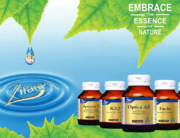Key message: Components of some types of plastics are known to be hazardous to human health, especially when exposed to heat.
Action point: For hot food, it’s best to stick to glass or ceramics. When it comes to heat, there are no materials – short of ceramics – that don’t leach something. Or for a safe alternative for kids, try biodegradable bamboo dinnerware.
Are you using plastic containers to heat your food?

You might want to reconsider. Components of some types of plastics are known to be hazardous to human health, especially when exposed to heat.
The two main types of plastic used in dinnerware are melamine resin and polypropylene.
Melamine resin is a tough plastic that can be found in children’s dinner sets, many picnic sets and take away noodle soup bowls. On its own, the compound melamine is toxic to human health. Ingested at high concentrations, it can damage the kidneys.
A recent study1 from Taiwan showed that people who consumed hot soup, which was 90 degrees celsius when poured into a melamine bowl, excreted small amounts of melamine in their urine. This indicates that melamine from the soup bowl had been absorbed into the body.
Other plastics used in food containers to be wary of are bisphenol A (BPA) and phthalates. BPA is primarily found in a type of plastic called polycarbonate or PC (recycle code 7). Phthalates (such as the plasticiser diethylhexyl phthalate or DEHP) are primarily found in polyvinyl carbonate or PVC (recycle code 3).
Studies have shown that both BPA and phthalates are endocrine disruptors2. Endocrine disruptors are chemicals that interfere with the body’s endocrine system and produce adverse developmental, reproductive, neurological and immune effects in humans.
Endocrine disruptors can:
- Mimic or partly mimic naturally occurring hormones in the body like estrogens (the female sex hormone), androgens (the male sex hormone), and thyroid hormones, potentially producing overstimulation.
- Bind to a receptor within a cell and block the endogenous hormone from binding. The normal signal then fails to occur and the body can’t respond properly. Examples of chemicals that block or antagonise hormones are anti-estrogens and anti-androgens.
- Interfere or block the way natural hormones or their receptors are made or controlled, for example, by altering their metabolism in the liver.
When containers made with BPA are heated, BPA levels in food have been found to increase.
And while reusing old plastic containers might be good for the environment, it could have the opposite affect on your health. Plastics are large structures (polymers) synthesised from smaller building blocks called monomers. Old plastic containers can pose even more of a health risk because they are more likely to break down into their monomers.
In general, plastics that are marked with recycle codes 1, 2, 4 and 5 are unlikely to contain either BPA or phthalates. But that said, even in plastic polymers that are not hazardous, the monomer may still be toxic on its own.
References
1. Chia-Fang Wu et al (2010) Urinary melamine and adult urolithiasis in Taiwan. Clinica Chimica Acta. Volume 411, Issues 3–4, 184–189
2. National Institute of Environmental Health Sciences. (2015) Endocrine Disruptors. http://www.niehs.nih.gov/health/topics/agents/endocrine/
Kat Boehringer
Freelance journalist and editor
Kat Boehringer specialises in health communications including health writing, health promotions, and social media management. In her spare time she works as a massage therapist and aspiring novelist. Connect with her at LinkedIn.






































































































































